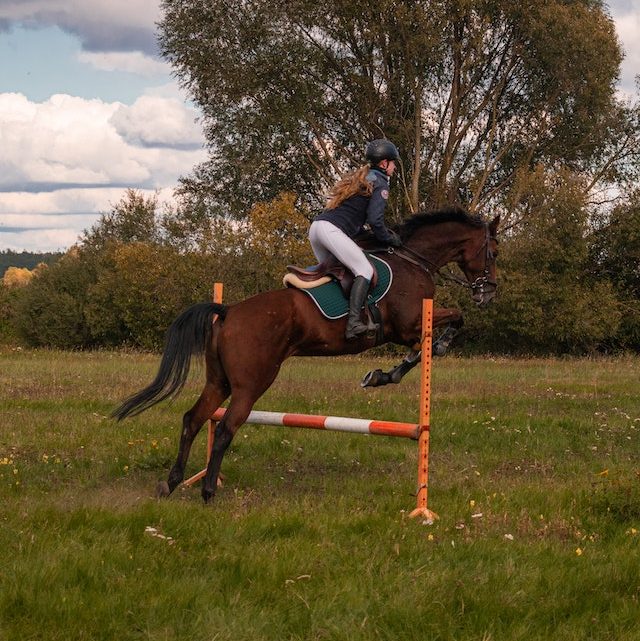A Guide To Show Jumping Fences
November 5, 2022Jumping fences is one of the most important aspects of horse jumping. A horse must have the capability to jump fences, and the rider must be able to maintain rhythm, balance, and tempo during the jump. This article will go over some of the basics of jumping fences and help riders learn the skills necessary for a successful performance.
Joker Fences
Joker fences are used in competitions for jumping horses in upper divisions. The horse jump equipment consists of a rustic rail and two wing-like fences. Each fence has a specific amount of time to clear. If not, they will be deducted from the overall score.
Joker fences are used in a jump competition called the Gamblers Stakes. Riders compete for maximum points in 60 seconds. A successful jumper will score heaps of issues. A failure will result in a deduction of 40 points.
Trakehner Jump
The Trakehner horse is a light, warmblood breed of horse. This breed originated in the city of Trakehnen, East Prussia. It was first established in 1731 and remained in operation until 1944. Following World War II, the town was renamed Yasnaya Polyana. The Trakehner is now one of Germany’s most popular show horses.
Trakehner sport horses are bred for both show and dressage competitions. One of the most famous Trakehners of all time, Abdullah, was an international show jumper. His dam, Abiza, was bred to the stallion Donauwind at the German Verband Stud Birkhausen. Abiza went on to produce the Grand Prix show jumper Abdullah, who was then sold to Sue and Terry Williams of the United States. Abiza also produced Grand Prix show jumpers Adrian and Amiego, as well as highly rated performance horses and brood mares.
Tables
There are many classes within horse jumping, but the basics are all the same. The primary difference is that there is no speed involved. Instead, the emphasis is on performance over the obstacles, and any mistakes make penalties. Table A is the most common class. This class uses poles as obstacles and is timed. The winner takes the first spot, so mistakes can affect the results.
The tables are organized by skill level. There are US, German, Dutch, French, and British levels. The first round has a time limit of 15 seconds, and the second round has a time limit of nine seconds.
Banks
Banks are an essential part of horse jumping training. These obstacles are similar to natural terrain and can be taught to horses using the same methods as other jumps. The key is to avoid scaring your horse. Introducing small banks to your horse early on will make the process easier.
Begin by creating a bank with a sloping side you can ride over. This way, you can practice getting on and off the bank. You can also practice following a friend’s horse up and down the ramp.
Cross Rails
When choosing a cross rail for horse jumping, remember the purpose. The rails should be high enough to make the horse’s front end “ascend” over them. The opposite type of jump, called a descending oxer, is forbidden by FEI rules.
Cross rails are also designed to help you and your horse maintain balance while jumping. The best way to jump over them is to ride over the poles in a two-point position. It is safer than lunging over them. Additionally, riding in a two-point position helps you build your endurance.
Hogsback Jumps
The hogsback jump is a type of jumping that horses do over poles. It is typically set up with three uneven poles fixed at different heights. This type of jump helps horses gain kinetic energy when jumping over the poles, which they then use to jump higher. This type of jumping also requires agility and balance on the horse’s part.
This type of jump is a variant of the spread fence. The height of the poles varies from one side to the other, with the centre being lower than the sides. It is most commonly used during training. The height of the fence can affect the takeoff and landing distance. Therefore, this type of jump is best suited for four feet six inches or higher fences.
Coffin Jump
You must know how to approach the obstacle correctly if you’re trying to get your horse to jump a coffin. A quick approach can result in a fall or refusal. So instead, you must sit up as you approach the fence and remain in contact with your horse. Then, you must raise the poll so your horse can achieve an uphill balance.
The Coffin jump is a combination of two types of jumps. In horse jumping competitions, it’s usually performed on the cross-country course. It’s shaped like the roof of a chicken coop, but the horse must go up and down a ditch before landing. The coffin jump is the most popular obstacle in cross-country competitions, though it can also be used in derby-style classes.



